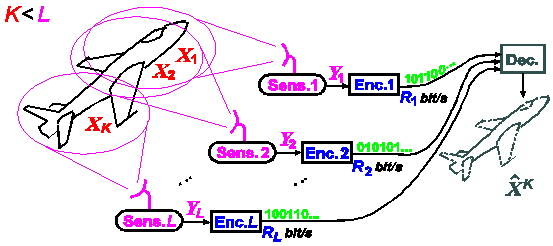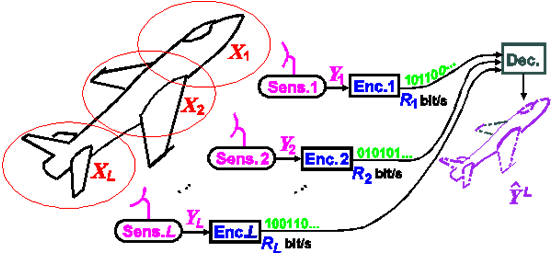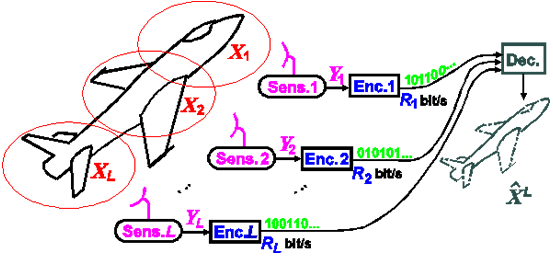June 2015 Issue
Research Highlights
Multiterminal source coding: deciphering noisy observations
Determining information of an event from a number of remote noisy observations poses a problem that has interested mathematicians since the 1970s. Active research on the topic has led to a proven theorem of tolerance boundaries for reconstructing the original source from indirect observations.
Now, Yasutada Oohama from the University of Electro-communications, Tokyo, has formulated boundaries for noisy observations from several sources.
Systems of this kind are sometimes termed the 'CEO problem' as they mimic the challenge a CEO faces when making decisions based on reports of events he has not observed directly. The CEO will need to make decisions based on information of events reconstructed from the reports with the distortion to the original information confined within a tolerance margin or 'rate distortion region'.
Oohama considers a series of 'correlated' sources - events that are connected in a particular way. "We can consider a case where the distributed encoders cannot directly access the source outputs but can access their noisy observations," he explains. By formulating matrices of the sources and distortions he identifies a number of characteristics about the system. He considers three distortion criteria for the problem that stipulate boundaries for the errors estimating the source data and various characteristics of the distortion matrix.
In investigating the multiterminal system Oohama shows how it is linked to the remote (single) source coding system. He also derives several new partial solutions to the multiterminal distributed source coding system.
Reference
Y. Oohama, Indirect and direct Gaussian distributed source coding problems, IEEE Transactions on Information Theory, 60, 7506-7539, (2014).





